18 November 2016
Paris, nine in the evening, a park bench in the 5th arrondissement and the chatter of young people in the background. In one hand a cocktail, in the other The Craftsman by Richard Sennett, an American sociologist who teaches at New York University and the London School of Economics. Sitting there waiting to be interviewed is Giacomo Moor, a designer who closely resembles the figure described in the book, that of an artisan who does things well and is proud of his work. Born in Milan in 1981, Moor went to the Polytechnic after high school and graduated with a thesis on wood, published by Abitare. During his years at university he got a job in a carpenter’s workshop and learned joinery. In 2011 he founded in Milan, where he lives, the Giacomo Moor studio, which today designs and makes things for galleries, private customers and companies like Acerbis, Memphis, ProjectB, YOOX and Environment Furniture. In 2013 he brought out his first collection, Attraverso, followed by Metropolis and Palafitte. In 2016 he won Elle Decor Italia’s Young Designer Talent of the Year award and was proclaimed Best Young Designer at the Salone del Mobile in Milan. “But in reality,” he tells us, “I’m a cross between a designer and a joiner. My day is not that of the classic designer.”
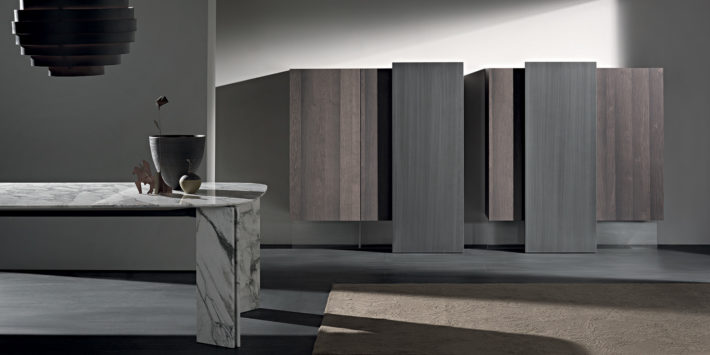
Alterego, design by Giacomo Moor for Acerbis, 2016.
How is your day structured?
Up very early and early to bed too, like the craftsmen of old.
Be more precise, what do you mean exactly?
I wake at 5:30 to 6. The early hours of the morning are the only ones I spend in the workshop, where there are the guys who work for me and I can get myself organized. Then the phone starts ringing and it’s hard to stay on top of all the things that are going on. The only real moments devoted to design are early in the morning and at the weekend, to my wife’s delight.
How many people are working with you?
Nine.
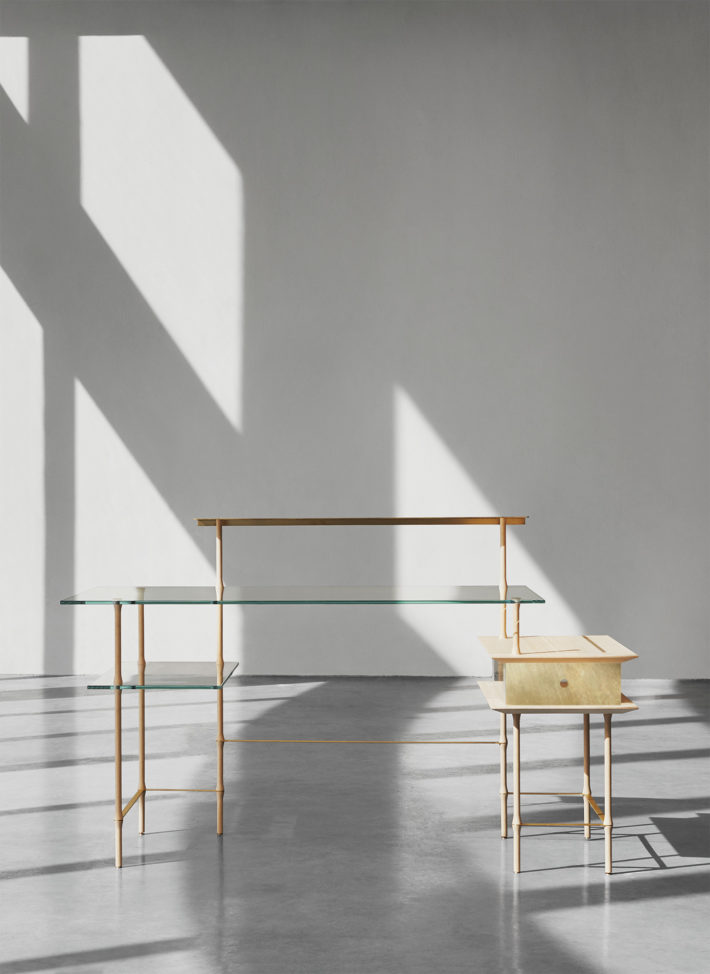
Storck, Palafitte Collection, design by Giacomo Moor, 2015. Photo: Max Rommel.
What is Giacomo Moor’s trademark?
A recognizable language and above all a way of working. We try to understand the client’s deepest needs and propose suitable solutions, using what is almost a Socratic method. In reality, the secret of our work lies in a very simple formula.
Which is?
You need a kitchen for your home. You don’t call a carpenter, and not an architect either. You contact a single figure. That way you skip a step and reduce the cost.
How did you get this idea?
During my years at university I worked in a joiner’s shop, and then I graduated under Beppe Finessi. And so I learned these two skills, that of the designer and that of the joiner.
What relationship do you have with Beppe Finessi?
I owe him a great deal. He was the first to show me the way. He said to me: “You work wood? Great, let’s do a thesis on wood.” And it was from there that I became convinced it was the road I should take.
Do you feel yourself to be more of a craftsman or a designer?
Both. I wouldn’t be able to just operate the machines, nor limit myself to drawing. The combination of design and manual skills characterizes all my work.
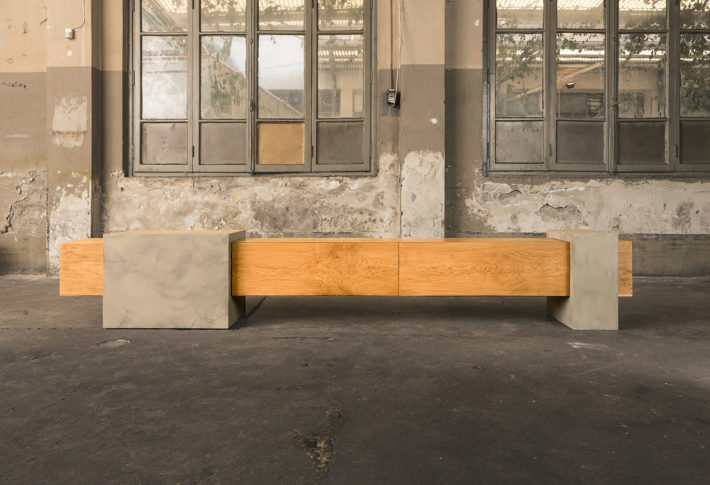
GM1, Attraverso Collection, design by Giacomo Moor, 2013. Photo: Delfino Sisto Legnani.
How much does knowhow count?
A lot. An empirical approach helps to solve many problems of design.
Where do you learn it?
Not at university, at least in Italy, where the hands-on approach to material is lacking. You need experience, practice.
What experience have you had in the field of joinery?
In Milan I worked in the shop of the joiner Marco Lissoni. He made classic pieces of furniture to order and introduced me to this world.
How much do you love wood?
I have a love-hate relationship with wood. Wood moves, warps. Solid wood never stays still and it’s a nightmare. So, if you don’t do things properly, you risk making a shoddy object that is no good after a few days. Wood is a very difficult material to master.
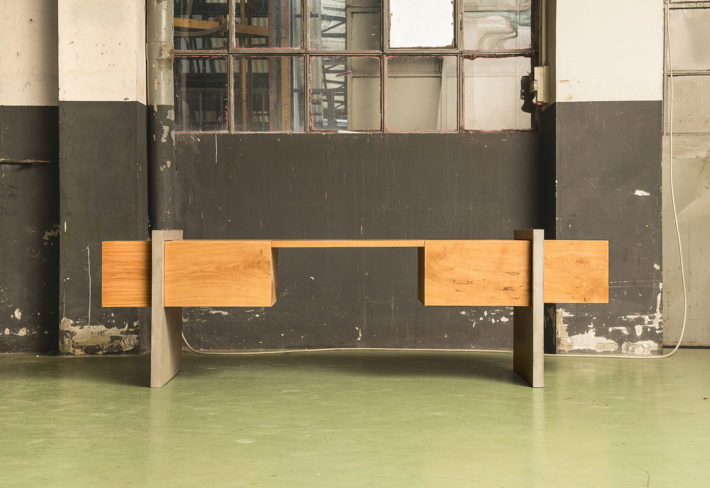
GM3, Attraverso Collection, design by Giacomo Moor, 2013. Photo: Delfino Sisto Legnani.
Richard Sennett writes: “The modern world has two recipes for arousing the desire to work hard and well. One is the moral imperative to do work for the sake of the community. The other recipe invokes competition.” Do you see yourself in this?
We do work hard and well. Our advantage is the extremely specific nature of what we do, given that we are known for our ability to work a particular material, wood. And when you work well, betting on quality, it is good for the community.
And being competitive?
I am one of those who say: “I love my work, but it’s a race.” If you ever come to see us you will understand. It is necessary to work well and produce things rapidly.
A few months ago you changed premises. Can we talk about your new workshop?
It’s much bigger than the previous one. It’s located behind the old shop, in the Loreto district, near Via Padova.
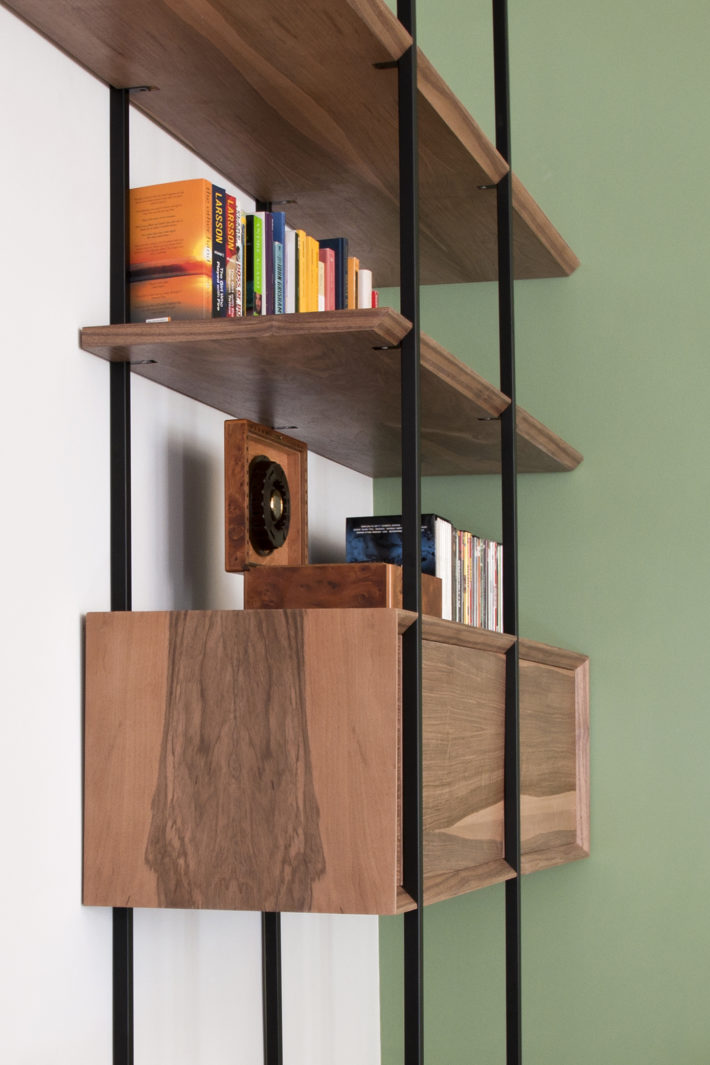
Breccia, design by Giacomo Moor, 2015. Photo: Gionata Dellaca.
Joinery is one of those jobs that is often passed down from father to son. What does your father do?
He’s a doctor. Indeed, it has been a leap in the dark, if for no other reason than the fact that every screwdriver I buy is the first of its kind. You have to acquire everything from scratch.
In his book Sennet speaks of the importance of tools and their sublime character. Is it the same for you?
That’s the typical attitude of those who have several generations behind them. In my case there’s much less of an air of the sublime, but you certainly don’t throw the most important tools away and you go on using the same ones over time.
What tools do you possess?
By tools I mean mostly chisels and files, used to work on details by hand. Then you have to know how to use the machines. In Brianza, only two out of ten good joiners have all ten fingers. The problem with machines is when you get too confident with them.
Let’s talk about your designs: is there something particularly close to your heart?
The Palafitte (“Piles”) collection is the most complex I’ve ever produced, from the viewpoint of its design, its history and its technique.
Where did the inspiration come from?
I was in Brianza, at one of my suppliers. I had to buy sheets of walnut for a client. There were some sheets of bamboo lying on the ground. We talked about bamboo, which is not in fact wood, but a plant fiber. This made me think of the piles used in lake dwellings, so tall and slender, and I created a world out of the fiber.
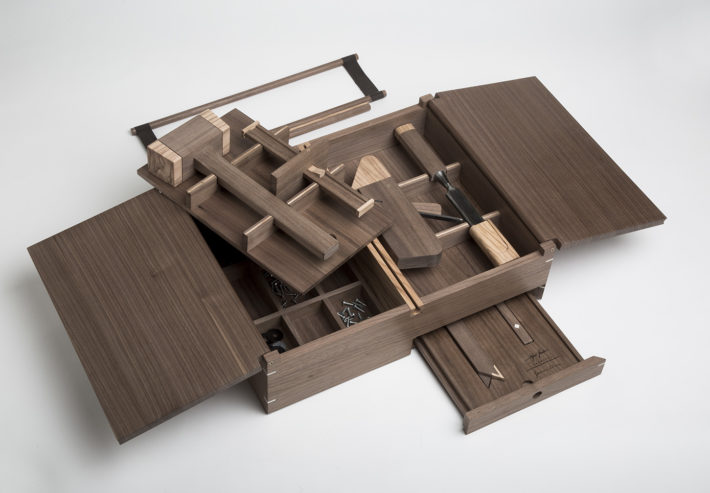
Kit del Legname, design by Giacomo Moor and Giordano Viganò for Fondazione Cologni, Living e yoox.com, 2016. Photo: Laila Pozzo.
The design stems from the material?
There’s no general rule, it’s how it went that time. The Metropolis collection, for example, is made up of lattices of black iron whose skeletal character, due to the modular system, immediately established itself as the idea behind the design.
Does design have to be poetic?
Sometimes design is a sort of storytelling. When you make things for galleries you have the possibility of telling a story, whereas when you’re designing a piece for a company there other constraints to be respected.
I talked to Rossana Orlandi about this too. The gallery can be an excellent starting point.
The gallery give mes the possibility of telling a story with what I design, it’s an opportunity to try out what I have in mind. It is an excellent starting point because from it can come products intended for the industrial market.

Giacomo Moor and Giordano Viganò. Photo: Laila Pozzo.
Projects for the future?
A new collection for a gallery.
On what basis do you select the people you work with?
They are fundamental. If we have got this far, 50 percent of it is due to them, and this is not flattery. I’m the oldest person in the studio. We all have degrees, even those who work on production.
Degrees in what?
The man in charge of production, a real powerhouse, has a degree in economics and comes from Brescia. He took a course in joinery, one in restoration and then came to me. The first two years he worked every day until six o’clock, then got on the train for Brescia and went to his course in restoration. They are people with clear ideas, who want to do things well. You know what the secret is?
No.
Surround yourself with capable and enthusiastic people, full of passion.
This makes the difference?
Absolutely. The best designers choose the best collaborators.

Dedalus, Metropolis Collection, design by Giacomo Moor, 2014. Photo: Max Rommel.
Is it usually the companies who ask you for products, or you who propose things to them?
It’s the companies who contact me. I don’t know anyone who has started by knocking on the door of a company, proposing a design that then went into production. I believe in synergies, and so when a company contacts you, a relationship develops, a dialogue starts. You prepare sketches and ideas, and in the end the product comes. It makes no sense to present yourself to a company with an object that is already done and dusted.
In design there are names that are in fashion, others that are not. Names that never fade and others that burn out. What do you think about this?
I think that if a designer offers sound products, with some thought behind them, he is not going to go out of fashion. Hurry is not good for design. Success is the sum of many things well done.
Has there been a passage of fundamental importance in getting to where you are? Something that has radically changed your vision of design?
I did my first collection for Memphis, Attraverso, in which I investigated beams: monumental objects that are intentionally sturdy and heavy, closely linked to cabinetmaking. Then, to my great surprise, they commissioned the next year’s collection from me too and out of that, almost by chance, came Metropolis. So I started to “hollow out” my furniture, to realize that wood could also be used without it being heavy and redundant. At that point I understood that it was right to change my language.

Babel, Metropolis Collection, design by Giacomo Moor, 2014. Photo: Max Rommel.
What teachers have you had in your life, apart from Beppe Finessi?
Paolo Ulian, I’ll never tire of saying it. I’ve known him for a year, but I’ve admired him for ten. He operates outside any logic of the market and for me is exceptional.
Do you like living in Milan?
Given the way I’ve organized my life, I couldn’t live anywhere else. I find that it’s a wonderful city to work in, less so to live in.
Are there distinctive elements of your character that are reflected in your work?
Stubbornness.
Do you make mistakes?
All the time. I remember a corner kitchen, four or five years ago. We didn’t yet possess an electronic goniometer to measure angles with and did it all with protractor squares, as in the old days. I took the complementary angle, and the whole kitchen was made on the basis of that angle. A huge mistake. When you get there, you start swearing.
Like a real carpenter from Brianza.
Exactly. But don’t write that down.
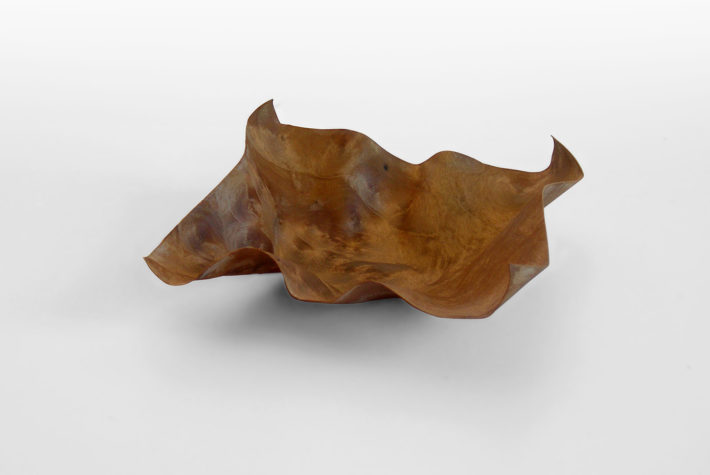
21 grammi, design by Giacomo Moor, 2009.
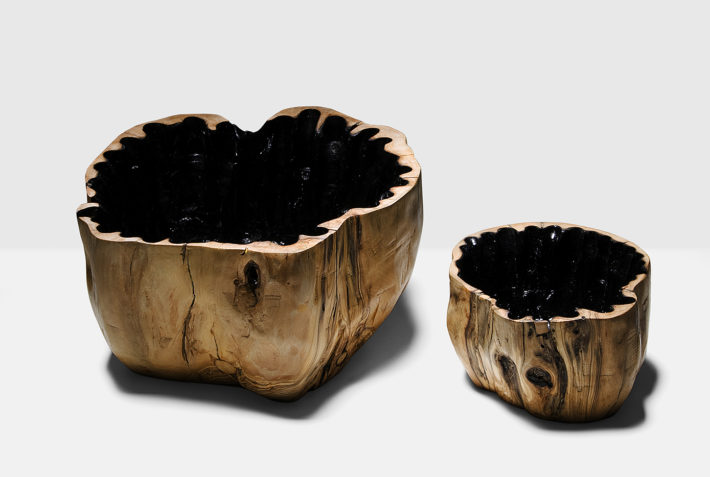
A Zampa, design by Giacomo Moor, 2009.
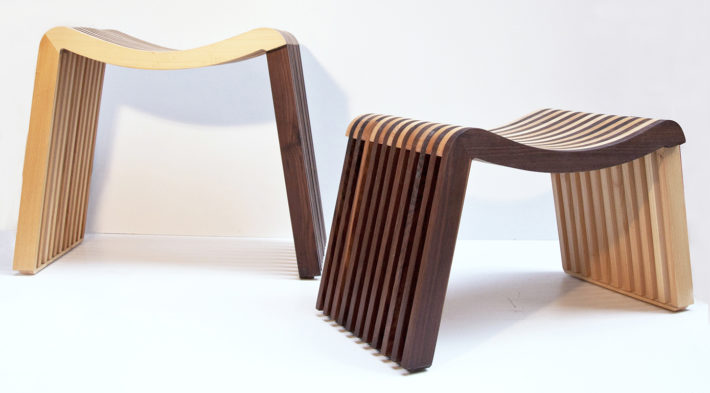
Scrum, design by Giacomo Moor, 2012.
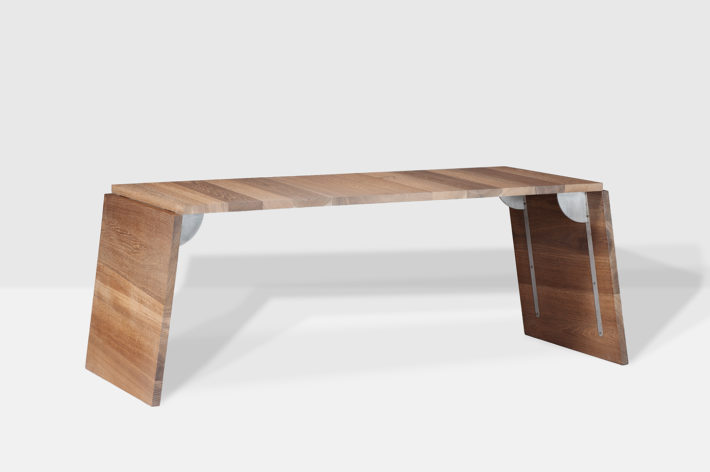
95°, design by Giacomo Moor, 2013.

Ironmine, design by Giacomo Moor, 2015. Photo: Iacopo Carapelli.

Yukon, design by Giacomo Moor, 2013.
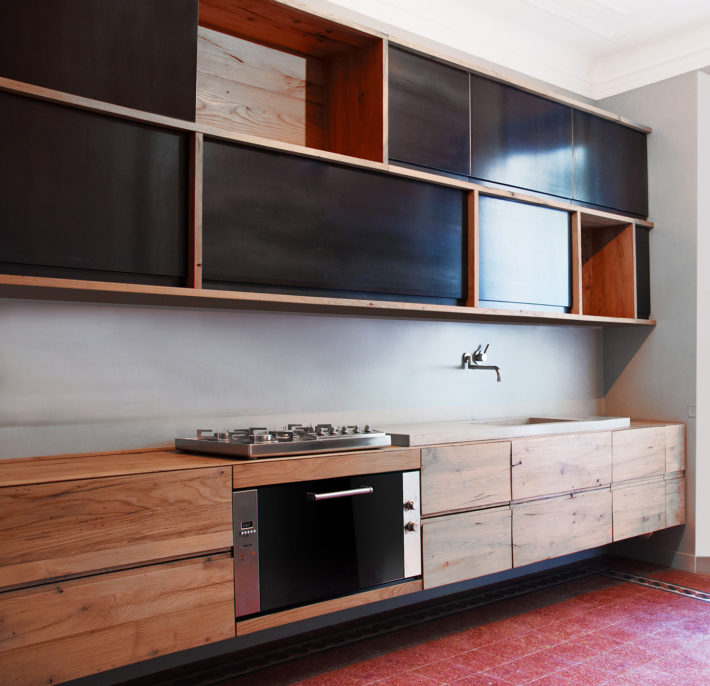
The Iron Lady, design by Giacomo Moor, 2013.
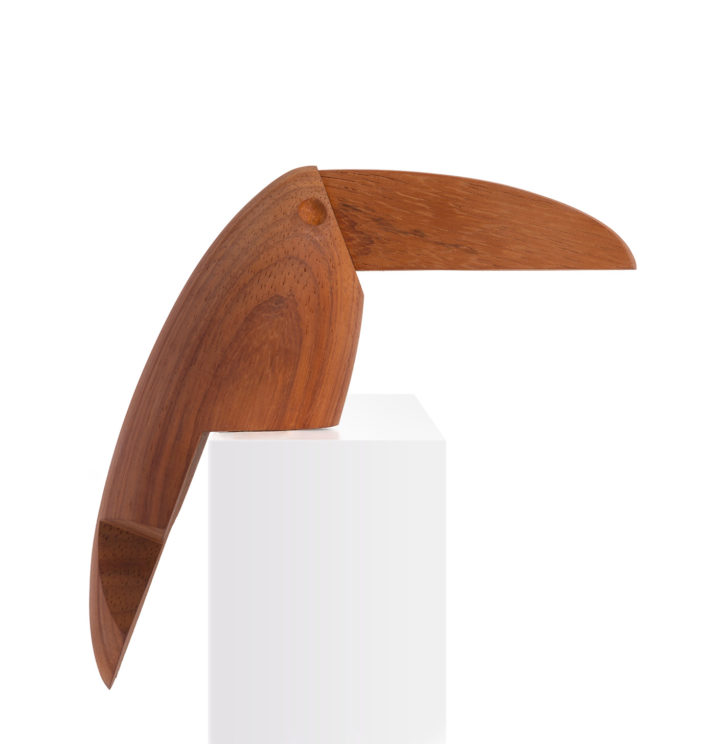
Tucano, design by Giacomo Moor for Woodyzoody, 2016. Photo: Lea Anouchinsky.
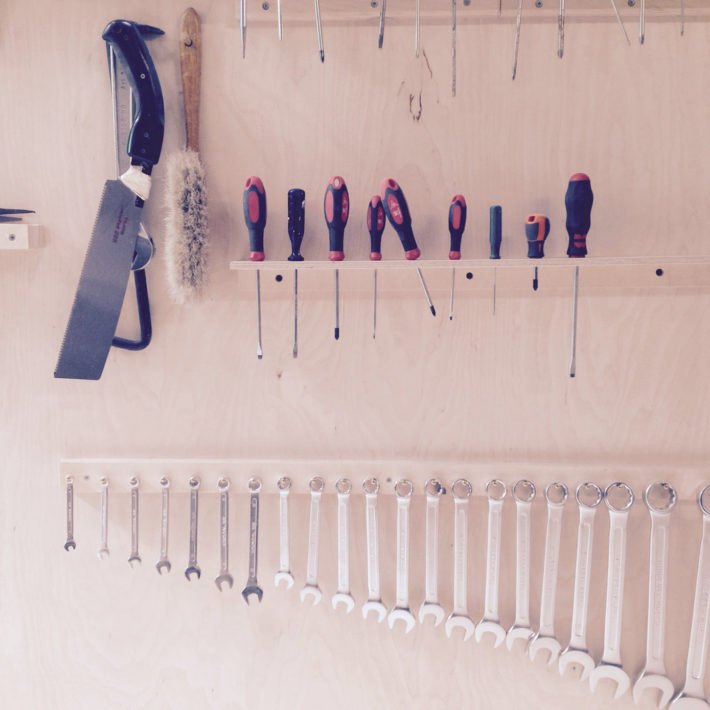
Giacomo Moor studio.
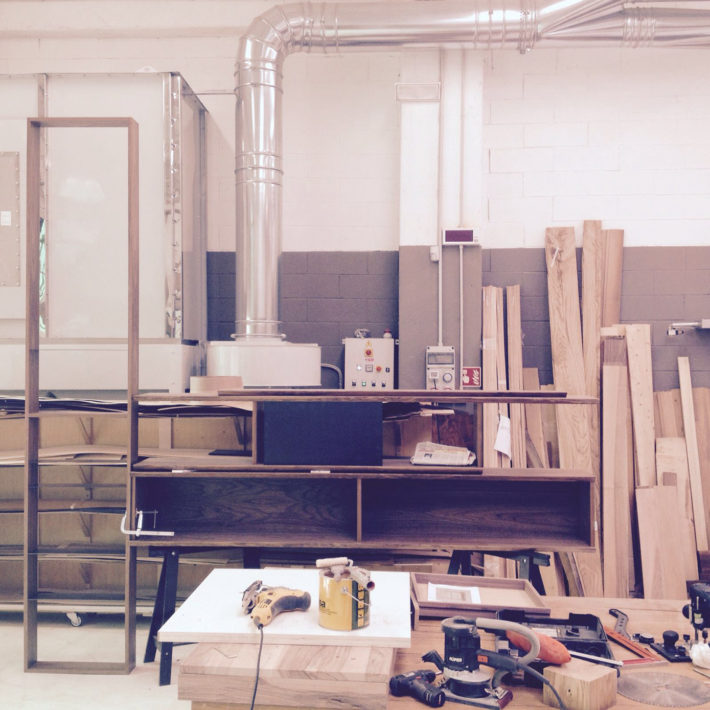
Giacomo Moor studio.